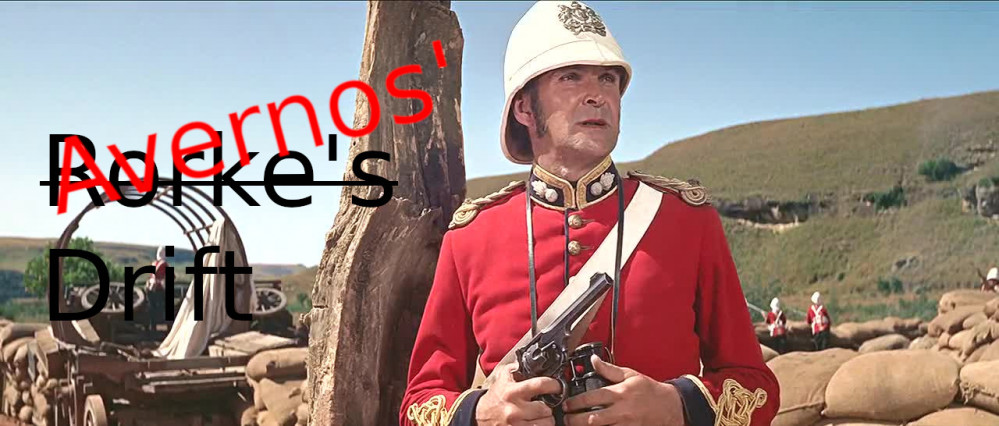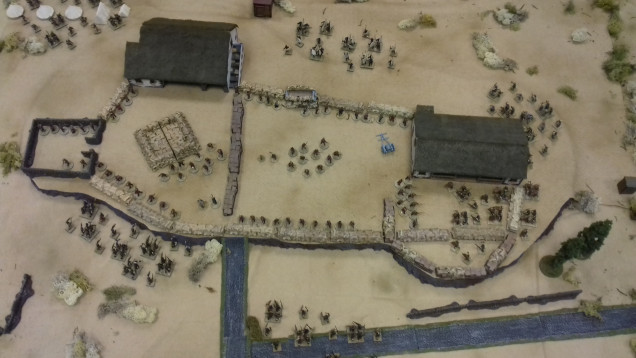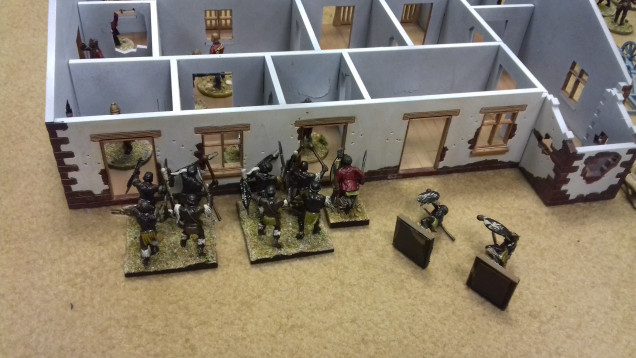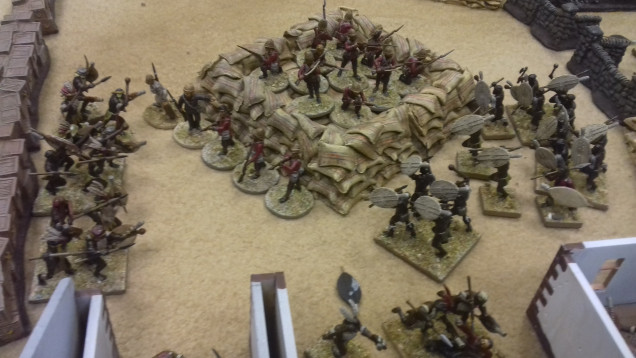
Avernos' Rorke's Drift
22–23 January 1879, Rorke's Drift Rules 2
Here are a set of additional rules to add to TMWWBK to help reflect some of the events that occurred during the action and to aid in gameplay. Again these are based on my set up so it may be necessary to amend some of these for your own setup.
All events take place at the end of the turn with any in-game effect being applied from the start of the next turn.
Initial Deployment
For the British the units may be deployed anywhere within the perimeter the only stipulation being Pvt Hook’s unit must be placed in the hospital.
Zulu units, the Snipers must likewise be placed on the Oskerberg ridge and may not come off this. If table size is an issue assume the ridge is off table and use a point on the table edge to measure ranges to while keeping track of casualties on the unit.
The Regiments are deployed randomly within the green area up to 6″ on, roll a d6 to see where they deploy 1-3 short board edge, 4-6 the Garden. Any units recycling will also randomly deploy to these areas, roll for each unit individually unless deploying a regiment.
From 18:00 onwards any point along any board edge may be used for deployment, or the base of the Oskerberg Ridge if represented, as Prince Dabulamanzi kaMpande arrives to take control.
Terrain
Mealie Bags and Biscuit Boxes; these are treated as obstacles and hard cover.
Abandoned Camp and the Garden; these are treated as soft cover
Buildings; these are treated as obstacles and hard cover.
Rooms may hold as many miniatures as will fit without overlapping bases.
Movement within the buildings is not measured in inches, instead, a Move action allows a model to move one room and At the Double to move two rooms.
British Units may not form Close Order within the buildings.
Final Redoubt; this is treated as an obstacle and hard cover.
The Redoubt may only be occupied by a single unit (do not worry about overlapping bases if necessary to fit the unit)
While inside the Redoubt the unit counts as being in close order with a 360° line of sight until reduced below 6 models.
Hospital Fire; the fire starts in the most south-westerly room at the end of each turn the fire spreads to any adjacent rooms, this will continue until the building is ablaze, the veranda does not count as a room.
Any models, British or Zulu, occupying a room that becomes engulfed in flames are immediately removed from play, no test for pinning is required for casualties inflicted in this way.
Light from the blaze illuminates the battlefield during the night, any unit with a model within 12″ of a burning room of the hospital may be targeted as normal.
Night Fighting; Sunset came at around 19:30 on the evening of the 22nd and when full darkness descends visibility is limited to 6″ unless illuminated by the hospital fire.
So that is just about it all that’s left to say is that if anything doesn’t work for you change it, no game belongs to the author once they publish it.
If the gunfire from the British lines proves too devastating you can declare that any Zulu more than 8″ from the British Perimeter counts as one level of cover higher than they should due to the long grass.
As far as victory conditions go I keep things very simple, if there are any unpinned British units left at 04:00 then it is a British victory as Chelmsford’s column arrives, albeit perhaps a pyrrhic one.
If the Zulu Impis wash their spears then they have completed their goal and return to Zululand as the victors.
On the reverse of the Quick Reference Sheet I have a Timeline of what was roughly happening during the actual defence of the Drift hour by hour.
These are to be read aloud to the players, rather than twelve turns I think the twelve hours help to give people more clarity on the context of what happened and how their game may be altering from the precedent set by history.
The bold text is an Aide-mémoire for in-game effects and should also be read out so players on both sides know what is happening or about to happen so they can plan to make best use of the information.















































































Leave a Reply